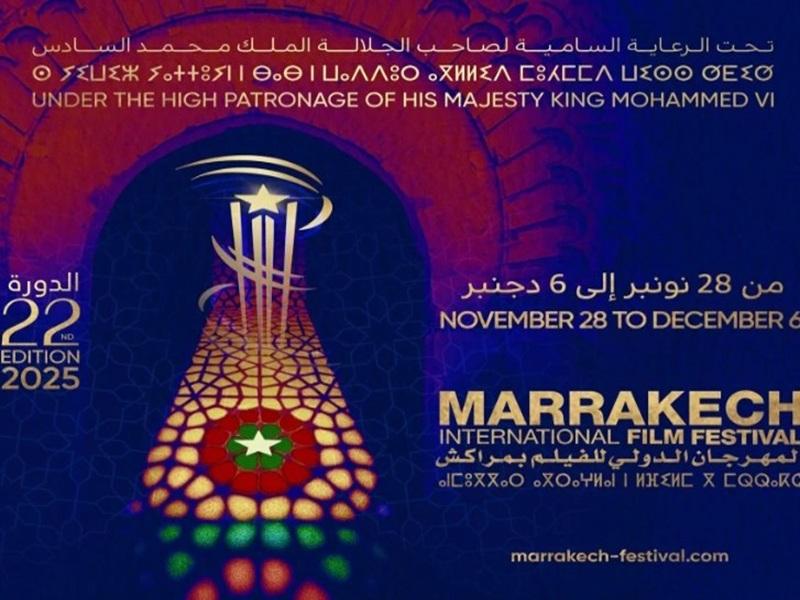
Circuit 13 : MOUNTAINS, PALMERAIES & DESERT
For single Sedan
Tiznit - Bou Izakarn- Guelmim-Tighmert - Assa - Foum El Hisn- Icht - Taghjicht (& Amtoudi)- Fask - Guelmim - Bou Izakarn - Agadir
With 4x4 :
Plage Blanche - Oued Draa - Tan Tan - Asrir

the Agouliz Cliffs
At 25 km westward of Tata (towards Taroudant) the Agouliz cliffs. Go by Akka road then rurn right when you reach Igherm road on the 20th km (29°41;75 N 08°09,63' W) take the excellent track which allows to visit the Agouliz village in a huge cliffed gorge unknown in genereal by tourists.
Tagmoute :
At 40 km from Tata, go to Tagmoute by road (29°01'51.06" N 9°27448;60" W), at the village entrance, take a very nice viewing track where you can visit an agadir when leaving.
Tagmoute :
At 40 km from Tata, go to Tagmoute by road (29°01'51.06" N 9°27448;60" W), at the village entrance, take a very nice viewing track where you can visit an agadir when leaving.
ThE SALTED WATERFALLS OF TiSSiNT
At 69 km eastward of Tata (towards Ouarzazate), you can discover the salted waterfalls of Tissint (29°54,34’N 07°18,93’W) where you can take a fresh bath.Under the waterfalls children can bath, in summer in a greater water plan. Using the same way it is possible to visit the house where Charles de Foucauld has stayed
11th Century Almoravide towers :
At 8 km from Akka/Ait Rahal, 11th century Almoravide towers (29°26’03.35’’N_8°15’18.62’’W), go back to Taroudant by Imitek panoramic track.
The Grottos of Messalite
At 7 km to the north of Tata (towards Tagmoute), we can visit the grottos of Messalite (29°48,75'N 07°59,35'W) by taking the road of Tagmout , going through the zaouia of Agadir Lhena (29°46,15'N 07°59'W) where from, the top of the village, you have a great view on the Afra and Tata palm grove. The grottos, that can be reached only be foot, are in front of the car park along the wadi. They are deep with important stalagmites and stalactites formations.
Heart
The Anti Atlas Is known for its beautiful geomorphosites shaped over thousands of years of erosion. One of the most remarkable is modeled in form of heart. It is actually of a repetitive hectometric or decametric shape and he can be identified easily from Moroccan sky (Virtual navigation on websites "maps").
Karst Of Imitek
A Karst means all limestone hills shaped by water infiltration generating deep caves, sinkholes and underground rivers and on the surface various geomorphosites often spectacular among which the Karst of Imitek.
It is located 30 km west of Tata and near Imitek. The joints allow the penetration of surface water, which loaded with carbon dioxide, start the digging process. Thus we will be able to observ "domes", "standing stones", "lapiaz" or "karren".
Microarchitecture
In serval places in the Anti-Atlas, the shaping of sludge carbonte rocks from the Ediacaran(-570 to - 542 million years ago) and from the Cambrian (-542 to -488 my) has created serval sculptures that are true masterpieces of nature, typical of the region. The genesis of these sculptures was conditioned by several parameters 1/ the long length of erosion 2 / the deversity of erosion process 3 / the lithological and strtigraphic nature of carbonate rocks 4 / the joints.
Ironer
In the Moroccan Anti-Atlas rock formations of the Ediacaran, the Cambrian and Ordovician era present sculptures of interfluves of chevron shapes, repetitive decametric and hectometric structures which are pointing towards the sky. The modeling of type "ironer" gives the illusion that it is folding. In fact this form observed from the side shows that the strata are skill in monocline position.
The Siren of the desert
In the Anti-Atlas more than a dozen of geological monuments have been identified including "the Siren of the desert" located at 23 km from the ESE of Tata (29°40'41.24"N 7°43'44.23" W), its morpjogenesis result from the shaping process of erosion of a folded structure. The site have 4 sedimentary cycles called Rich 1, Rich2, Rich3 and Rich4, each of which begins with limestone overlain by shade and finishes with sandstone with intercalations of shale. The arcade shape we observe within this geological monument is the result of a process of morphogenetic erosion of type "ironer".
the pyramids tadakoust
The Anti-Atlas is an impressive rock formation with remarkable geomorphological features.
Around the village of Tadakoust you can find impressive rock formations of pyramid. One one of them located 750 m above sea level stands a fortress. this is the Agedir village, which can be accessed by a tortuous staircase.
EYE OF ZITRI
A virtual navigation of southern Morocco, using the sites “maps” at low altitude, allows us to appreciate the beauty of many “geological monuments” which is a geological heritage to be known to the general public. Among these monuments quoted as “eye of Zitri”, their morphogenesis originates from the shaping by erosion of Paleozoic formation. The iris of the eye is rich in hematite, which is of color red.
PIT de Tata
WELCOME TO THE REGION GUELMIM ES SMARA
As part of the ongoing efforts to achieve a vision of 2020 tourism, The CRT of the Guelmim Es Smara Region wishes once again to stand out with its will to give the voices and institutional decisions a realistic and pragmatic view on the necessities to provide immediate solutions taking into account the territorial, provincial and local To ensure the success of tomorrow's tourism.
For this purpose, having sought to define this region of Guelmim Es Smara and its five provinces, Guelmim, Tata, Assa-Zag, Smara and Tan Tan in the balance to be found between "Oasis and Ocean", Our CRT was able to collect local, provincial, regional and national data, tourist, economic and cultural, thanks to the Tourist Information Points (PITs) located on all the routes of penetration to the region, But also the data on the cooperative world, associative of the artisanal world, folklore of eco-societal and economic development thus allowing the constant updating of a portal www.portailsudmaroc.com thus feeding now with more than 13000 articles, news, documents and Videos, a tool for professionals as well as travelers themselves.
The latter makes it possible both to give the image of the Guelmim Es Smara Region perfectly integrated to the national development as that of an identifyingly strong region of these capacities and particularities.
Through these actions and the reality of the information thus transmitted, the Guelmim Es Smara Region is increasingly visited both by internal tourism and by international tourists now coming from all walks of life and from all over the world, fond of the riches and peculiarities of Niches it can offer.
PIT de Foum Z'Guid
WELCOME TO THE REGION GUELMIM ES SMARA
As part of the ongoing efforts to achieve a vision of 2020 tourism, The CRT of the Guelmim Es Smara Region wishes once again to stand out with its will to give the voices and institutional decisions a realistic and pragmatic view on the necessities to provide immediate solutions taking into account the territorial, provincial and local To ensure the success of tomorrow's tourism.
For this purpose, having sought to define this region of Guelmim Es Smara and its five provinces, Guelmim, Tata, Assa-Zag, Smara and Tan Tan in the balance to be found between "Oasis and Ocean", Our CRT was able to collect local, provincial, regional and national data, tourist, economic and cultural, thanks to the Tourist Information Points (PITs) located on all the routes of penetration to the region, But also the data on the cooperative world, associative of the artisanal world, folklore of eco-societal and economic development thus allowing the constant updating of a portal www.portailsudmaroc.com thus feeding now with more than 13000 articles, news, documents and Videos, a tool for professionals as well as travelers themselves.
The latter makes it possible both to give the image of the Guelmim Es Smara Region perfectly integrated to the national development as that of an identifyingly strong region of these capacities and particularities.
Through these actions and the reality of the information thus transmitted, the Guelmim Es Smara Region is increasingly visited both by internal tourism and by international tourists now coming from all walks of life and from all over the world, fond of the riches and peculiarities of Niches it can offer.
TAGMOUTE

PARADIS d'Aguinane

DAR Infiane

LA RENAISSENCE

RALAIS Des Sables

Hôtel Bab Rimal

HIBA

Hôtel IRIKI

SABLE D'OR

Hôtel El FAYJA

Gîte L'OASIS

Bivouac Nomade

Maison Chez Lahcen

Auberge le Safran

Auberge Souktana

Auberge Askaoune

Le toubkal

Le Zagmouzene

Riad Ain Khadra

Hôtel Dar Zitoune

Palais Salam

Riad Tafliag

Les bains berberes

Gîte Mentaga

Gîte Souss

Bivouac la Palmeraie

Riad Ksar Ignda

Sultana Royal Golf

Hôtel de Fint

Berbere Palace

Hôtel Ibis

Kasbah Dar Daif

Ecolodge Oued Nojoum

Kasbah Dar Daif

Maison d'hôte la Fibule d'Or

Dar Bladi

Camping Amridil

Kasbah Elmehdaoui Ouled Merzog

Ecolodge Oasis Bab el Oued

Maison d'hôte Casaroja

Auberge Kasbah Ennakhile

Dar Talhaya

Dar Ait Hmid

Riad Ma Bonne étoile

La petite Kasbah

HISTORY AND CULTURE:
We know today that most of the civilization trends which have been detected in Sahara reached its north border and even then the mountains of the Moroccan South.
The first occupants were blacks which presence has been certified by the engravings of Tassili (5th century BC).
Various white populations make up the Berber (called Lybico-Berber) Mediterranean who lived in Spain, Morocco, Moroccan Sahara and Canaries.
Palestinian charmite came by sea and land.
Semite arrived by emigration waves (10th century BC) searching for gold, silver or copper mines, either by sea or through desert.
Thus, Berber seams to have received from Mediterranean and Egypt their eldest element of civilization.
In 622, comes the islamic era. From 670, Oqba Ibn Nafi, at the head of the first arabic conquerors army, arrives in The Maghreb and founds Kairouan. In 681, he will mount a raid as far as Draâ and Souss. In 710, Moussa Ibn Noussair receives submission of the whole of The Maghreb in care of the caliph Omeyyade from Damas.In 786, Idriss the 1st, descendent from Ali, prophet’s son-in-law runs away from Arabia and finds a place of refuge in Morocco; as from 788, he has been recognized iman by Berber from Morocco.
Almoravide Dynasty 1055-1144 : The nomadic Berber almoravide warriors progress to the North, found Marrakesh in 1070 which becomes the capital of the kingdom, to who it gave its name : Morocco.
Amohade Dynasty 1130-1269 : The capture of Marrakesh in 1147 makes an end to the conquest of Morocco by the Almohades (the Unitarians). Abd el-Moumen manages to unify North Africa.
Merinide Dynasty 1269-1471 : the Beni Merin from Zenetes, coming from the Moulouya basin seizes Fes, Rabat, Sale and Abdou. Youssef Yacoub takes over Marrakesh in 1269.
 The Cherifan movements : Since 1508, the Portuguese compete with the transaharan trade. Coming from the Beni Saad arabic tribes, Mahomet descendants, originating from the Drâa Valley, the Saadian cherif el-Kaim resists to the Portuguese as from 1509. The Cherifan power is officialized when Marrakesh got seized in 1525.
The Cherifan movements : Since 1508, the Portuguese compete with the transaharan trade. Coming from the Beni Saad arabic tribes, Mahomet descendants, originating from the Drâa Valley, the Saadian cherif el-Kaim resists to the Portuguese as from 1509. The Cherifan power is officialized when Marrakesh got seized in 1525.
In 1578, the Saadan secures the gold road control by seizing Timbuktu and the Niger loop.
The Alaouite Dynasty : Birth of the Cherifan empire. Native from the Chorfa from Tafilalet, Ali descendant, the dynasty imposes its authority as from 1666. Moulay Ali Cherif, its founder, and its successors reunify Morocco and founds the Cherifan empire which spreads its authority as far as Senegal. To strengthen its external relations, he treats Louis the 15th and Jack the 2nd from England as equals.
Guelmin- Es Smara area : Spreads over a surface of 142 380 km², that is to say almost 20% the kingdom area. Strengthen by its priviledged geostrategic position, the variety of its natural sites, the area gathers all the ingredients of a center of tourist developments on a large scale.It is more than 170 kms of Atlantic coast (Guelmin and Tan-Tan districts), from where la plage Blanche spreads over 40 kms, Oued Chbika, also its hot springs. The area has actually at its disposal important potentials, its various natural scenery and the richness of its cultural heritage thanks to the mixing of Hassani and Berber cultures and traditions.
TOURIST ATTRACTIONS :
The oasis from the communes of Taghijt, Asrir, Tighmert, Ifrane of the Anti-Atlas and Timoulay include several tourist appeals : the Ksours and Kasbahs, the historical sites along the wadi Noun and at Kahf Lahmam (pigeons grotto) in the commune of Ait Bouflen, the Igoudas or collective shops (Amtoudi) and the cave engravings.
 The palm groves from the district of Tata (Akka, Tata, Foum Zguid) and from the district of Assa-Zag (Assa) count among the most important ones in the south of Morocco (more than a million palm trees that is to say 20% of date palm national heritage).
The palm groves from the district of Tata (Akka, Tata, Foum Zguid) and from the district of Assa-Zag (Assa) count among the most important ones in the south of Morocco (more than a million palm trees that is to say 20% of date palm national heritage).
The hot springs, notably the ones of Abaynou and Aïn Lalla Mellouka the water is renown for the treatment of dermic and rheumatic illnesses, which have therefore curative effects.
THE WADI MOUTHS :
Foum Assaka, tourist interest site attracts already the tourist professionals. This coast of great views and ecological richness is the subject of tourist vocation.
Foum Draâ, isolated site and difficult to accede by track from the national road RN1. It sets out a remarkable views quality with varied fauna. The site has been the subject of a detailed analysis of a future tourist development as part of a study on a tourist area schedule and development which will number 8 000 beds.
In addition of the mouths, the wadi surroundings towards the inside offer a tourist attraction potential a not inconsiderable one which arouses the investors interest from the tourist sector. It is the case, notably, of a french property developer who has built a hotel unity at Fort Boujrif (rural commune of Targawassay- commune of Guelmim) who knows an important success by attractring more than 400 tourists from different nationalities by month. Same thing for the Ksar of Tafnidilt located along the Draâ wadi and which knows the same success, the station Abaynou, eco Musée of Tighmerte. 2 other implementations Dar Infiane at Tata and the Akka Nait Sidi VIP bivouac (rural commune of Tissint) are to be mentioned for the same original concept and for its success.
Plage Blanche, this unity would be developed at 50 kms from the south of Ifni and at 60 kms from the south-east of Guelmim. Its particularity will be of being the first eco tourist seaside resort with 30 000 beds capacity.
 Hotel units ( 5* and 4* hotels and villages for tourist holidays) for about 5 300 beds capacity. An 18 holes golf, an commercial and craft center, a SPA and leisure implementations.
Hotel units ( 5* and 4* hotels and villages for tourist holidays) for about 5 300 beds capacity. An 18 holes golf, an commercial and craft center, a SPA and leisure implementations.
Residential unities for a total 10 500 beds capacity, about 2 200 flats and villas. The Fades group estimated that the works would last 8 years, the first hotel is planned to open its doors on 2012.
The National Park “Bas Draâ” is one of the most important national park, with a desert landscape and low human density. It constitutes an ideal biotope for a diversified and rich fauna nearly dying out (gazelles, dorcas, cuffed wild sheeps, carnivores including the striped hyena, jackal, red fox, fennec, porcupine, as well as birds as bustard, lancer falcon, the royal eagle, adding on reptiles). It is a biodiversity of high interest potential.
Chbika wadi, Foum Chbika site, at about 30 kms from the south of El Ouatia The convention on the installation of the tourist station «oued chbika «in tan tan,entrusted to the Egyptian group»orascom»has required an amount of 6 billions dirhams.the project which will contribute to the creation of 2.500 jobs,consists of the realization of hoteliary units with a capacity of 5.000beds,of residences(1.851units),ludic and sporting infrastructures(centre of congress,museum,and a sport center).
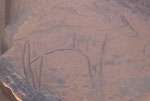
The cave engravings from the Tata district to the Es-Smara district, the first discoveries of cave art date back the 19th century.
At present, we number more than 300 sites spread over the whole territory.
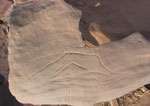 This sites, in which prehistoric men used to engrave, are often on the open-air and in general, located on the wadis side.
This sites, in which prehistoric men used to engrave, are often on the open-air and in general, located on the wadis side.
As per its geographical location, they can be classified into three concentrations :
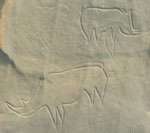 the Haut-Atlas plateau, along the Draâ valley and next to the dried-up wadis of the saharan districts. The cultural heritage of Morocco is represented through all of these periods from prehistory (from ancient Palaeolithic to Neolithic) to history, going by protohistory.
the Haut-Atlas plateau, along the Draâ valley and next to the dried-up wadis of the saharan districts. The cultural heritage of Morocco is represented through all of these periods from prehistory (from ancient Palaeolithic to Neolithic) to history, going by protohistory.
Some sites are the subject of active archeological researches. It allows us to distinguish the different stages of Morocco history over about one million years period. Cave art is one of the component of Moroccan historic heritage. During almost 8 000 years, men used to engrave magnificent “paintings” onto sandstones to illustrate the activities of day-to day life and its beliefs
 The pigeons grotto, (going to Agadir), some researchers discovered perforated sea molluscs Nassirius type, in the pigeons grotto at Tafoghalt, an area known for its magnificent grottos, human heritage treasures lying hidden.
The pigeons grotto, (going to Agadir), some researchers discovered perforated sea molluscs Nassirius type, in the pigeons grotto at Tafoghalt, an area known for its magnificent grottos, human heritage treasures lying hidden.
Dated from 82 000 years, these are pieces numbered among the eldest, representing ornaments in the world and putting Morocco as a country where civilization aroused long ago before other parts of the world.
They indicate very clearly, as per great specialists who have received this discovery, that humans have used symbols in Africa, 40 000 years before Europe.
As per one of the scientifics : “such a discovery allows to close the meeting on the african origines about the items of ornaments and put North Africa, and notably Morocco, as one of the eldest centers of distribution of ornaments items in the world”.
The pigeons grotto ornament is elder than what has been discovered before in Algeria, in South Africa and in Palestine.
HOSPITALITY :
The savoir-vivre begins by different ways to welcome vistors with what is immediately available and presentable :
Milk, symbol of the purity of the intentions, peace desire; refreshing drink, tasty and nutritive. The most important is goat, camel or cow milk
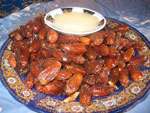 Dates (local palm grove products) go usually with the milk. Sweet, they equilibrate the blandness of the milk, scrape out the dust of the road which lay in the throat, perfumes nicely the breath and prepare to word exchanges. Tea, usually made with mint, national drink, is the first constant in welcoming tradition, from the most humble to the richest.
Dates (local palm grove products) go usually with the milk. Sweet, they equilibrate the blandness of the milk, scrape out the dust of the road which lay in the throat, perfumes nicely the breath and prepare to word exchanges. Tea, usually made with mint, national drink, is the first constant in welcoming tradition, from the most humble to the richest.
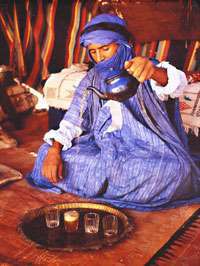 There is no home where a visitor won’t be served one, indeed several, glass of tea. It’s a meeting factor, a catalyst, communing symbol, rarely offered on
There is no home where a visitor won’t be served one, indeed several, glass of tea. It’s a meeting factor, a catalyst, communing symbol, rarely offered on
its own: it is served with batbout (small bread slightly risen), msemen (pancake with fat and baked in a terracotta dish).It can also go with
different types of cakes or biscuits, indeed, extreme pleasure, fresh bakedbarley or wheat bead. Lamriss, very well known drink in the sahara area, is a mix between cooked
floor and water adding a bit of sugar; very refreshing drink, moreover in summer and when there is no milk.
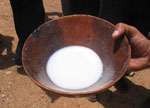 Zrig, very well known in the area. It is a mix of milk, water and a bit of sugar, with sometimes some yogurt.
Zrig, very well known in the area. It is a mix of milk, water and a bit of sugar, with sometimes some yogurt.
How can we talk about welcoming and hospitality without making reference to its corollaries : savoir-vivre and art of cooking ?
CRAFT :
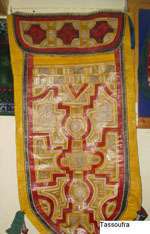 Craft in the area is the reflect of a spiritual and material civilization past. Between tradition and modernity, craft of the area opens itself onto new technologies and take the place which its own in the regional economy as factor of social-economic balance.
Craft in the area is the reflect of a spiritual and material civilization past. Between tradition and modernity, craft of the area opens itself onto new technologies and take the place which its own in the regional economy as factor of social-economic balance.
Priviledged micro-company field, craft is an important sector of economy by the turnover that it generates and by the employement it procures (more
than 11 000 craftmen in the different art and service craft channels).
In all the provinces, you will discover : jewellery, traditional leather working,
wood, traditional sewing, carpet weaving, fossilized stones, basketry (Assa-Zag and Tata provinces), pottery (Tata province).
Afra Cooperative
 The cooperative is composed of twelve (12) members seven (7 women and five (5) men) ...
The cooperative is composed of twelve (12) members seven (7 women and five (5) men) ...
AJIAL Cooperative
 7 women compose it, it is presided by Mrs. Mariam Ait Said ...
7 women compose it, it is presided by Mrs. Mariam Ait Said ...
INTERACTIVE MAP ENVIRONMENT ASSOCIATION
Hotel Locations, gites, guest house, hostel
Tourist locations
Geological locations
Prehistoric locations
NB : Click on the icons in the map to view information for each item.
Circuit 13 : 7 Jours / 6 Nuits au départ de Marrakech pour tout type de voiture
MONTAGNES, PALMERAIES & DESERT: Sud-Maroc & Anti-Atlas
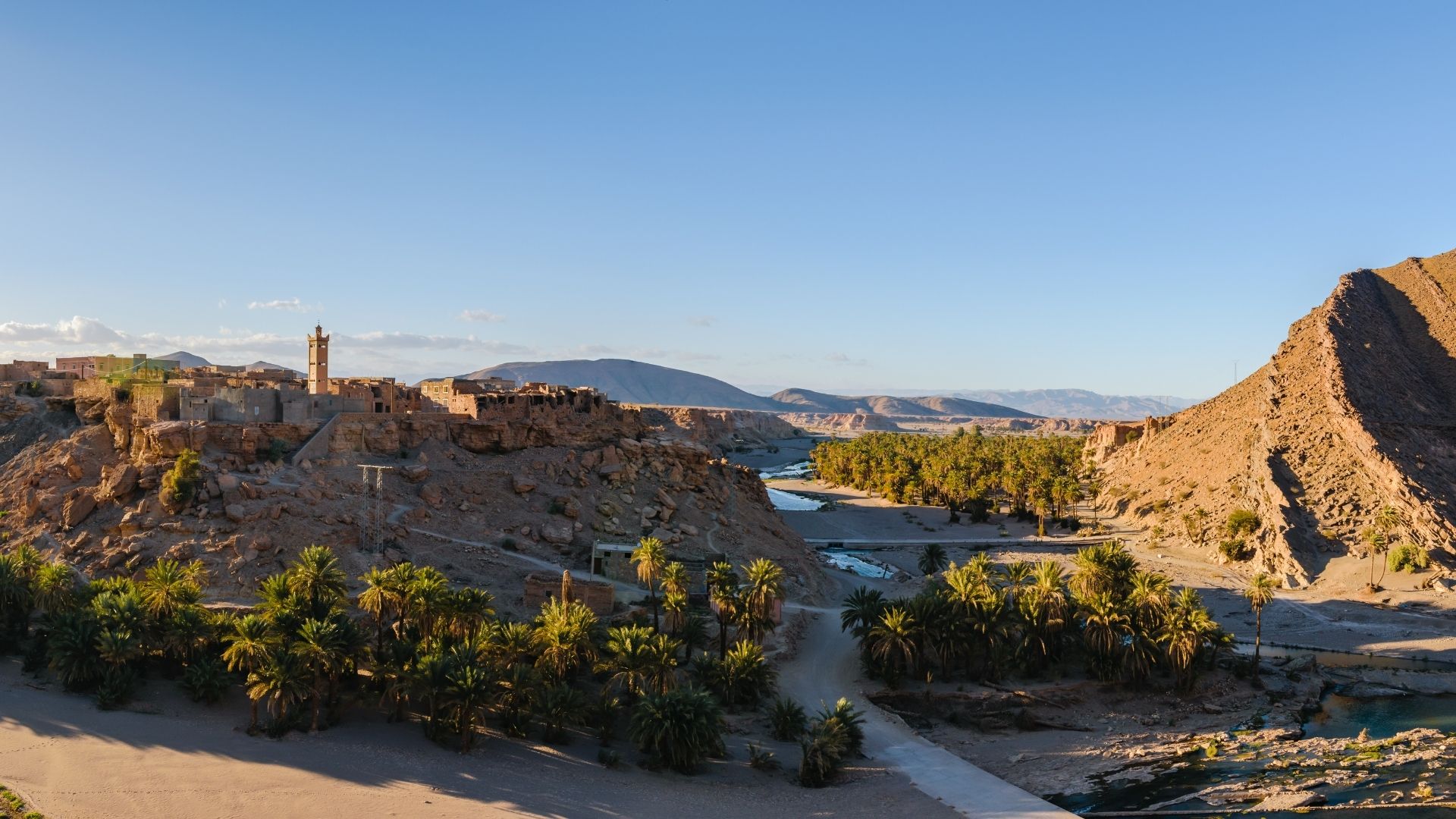
7 Jours 6 Nuits Pour simple Berline : (978 km)
Marrakech – Asni - Taroudant - Igherm – Issafen – Imitek – Akka – Tata – Tissint – Foum Zguid – Taznakht – Ait Benhaddou – Ouarzazate – Marrakech.
Jour 1 : Arrivée à Marrakech Nuit dans un hôtel ou Riad de votre choix.
Jour 2 : Marrakech- Taroudant (228 Km) : Après le petit déjeuner route pour Taroudant avec petite balade dans les ruelles de cette ancienne ville nommée aussi « Petite Marrakech ». Dîner et nuit à Taroudant.
Jour 3 : Taroudant – AKKA (202 km) -TATA (65km) Départ pour Tata en passant par Igherm, puis au centre village prendre route secondaire via Issafen et Imitek et continuation sur Tata. Possibles de visiter les Grottes de Messalites, l’horloge à eau et faire une balade dans la Palmeraie. Dîner et nuit à DAR INFIANE TATA
Jour 4 : Tata – Tissint (72 km) Après le petit déjeuner, route pour Tissint l’un des plus beaux villages de Sud Maroc avec balade en palmeraie et découverte des cascades d’El Aatiq d’eau salée, visite du vieux village de Tissint où Charles de Foucauld séjourna. Pour Diner et nuit : Choix entre la Maison Chez Lahcen Akka Nait Sidi ou sous les étoiles au Campement VIP d’Akka Nait Sidi.
Jour 5 : Tissint – Foum Zguid (67 km) Dans la matinée route pour Foum Zguid, petite ville à la porte du Sahara, un paysage désertique avec des anciennes kasbahs, qui offrent un panorama unique. Diner et nuit à Foum Zguid.
Jour 6 : Foum Zguid – Taznakht (86 km) – Ouarzazate (84Km) Après le petit déjeuner, départ pour Ouarzazate, en passant par Taznakht grand centre de tissage de tapis berbères. Dîner et nuit dans un hôtel de Ait Benhaddou.
Jour 7 : Ait Benhaddou – Marrakech (174 Km) : Dans la matinée départ pour Aéroport de Marrakech.
| Marrakech | Taroudante |
|---|---|
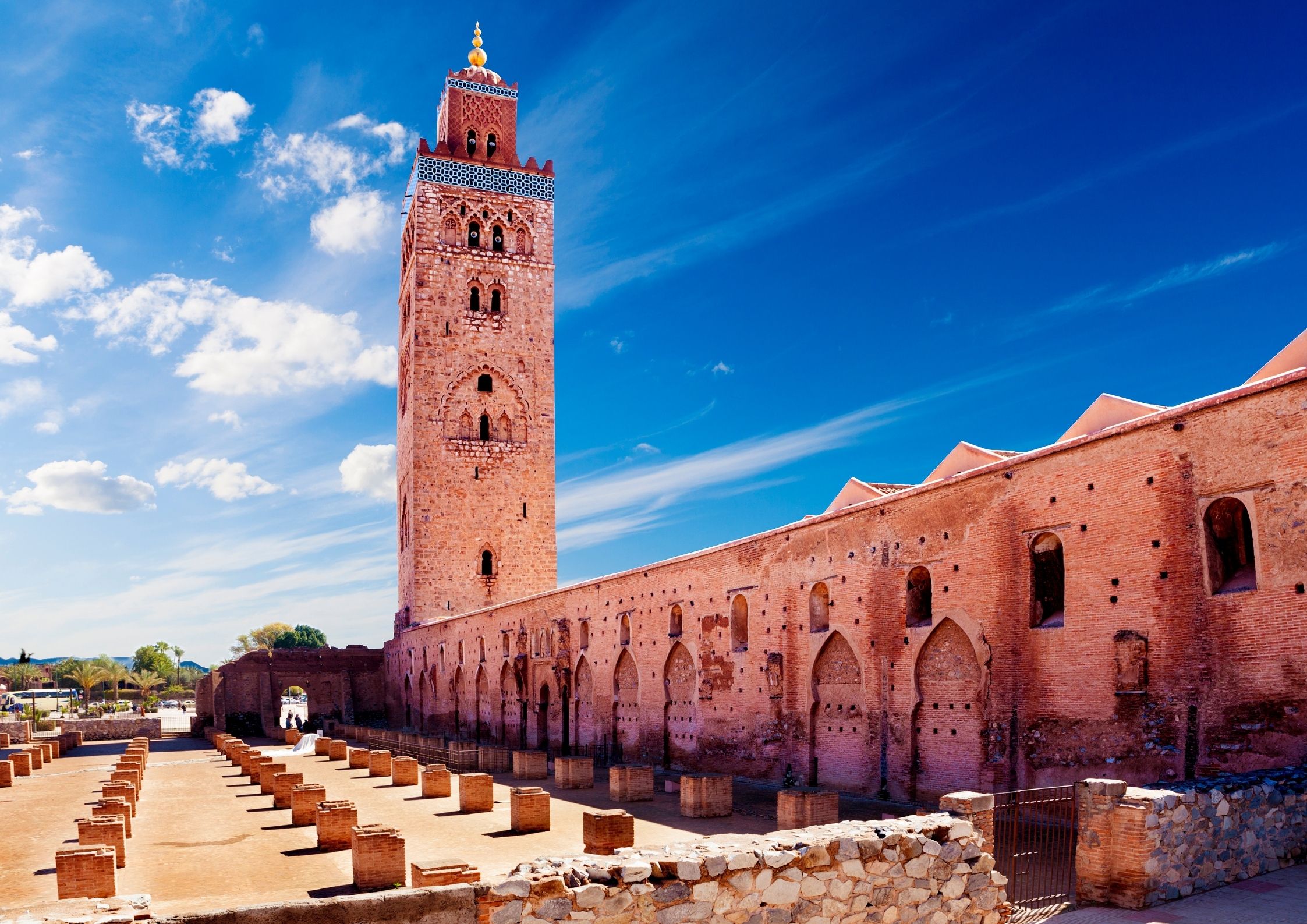 |
 |
|
Avec ses innombrables marchés, jardins, palais et mosquées, vous en aurez plein la vue. Marrakech, appelée aussi la ville rouge est la quatrième plus grande ville du Royaume après Casablanca, Fès et Tanger, comporte un patrimoine culturel impressionnant avec de nombreux monuments, des musées de qualité et sa fameuse place Jemâa Lfena. Dans ses environs directs l’on peut accéder aux vallées montagneuses (Ourika), station de Montagne pour l’hiver, et l’atlantique avec Safi et Essaouira. |
Idéalement située entre la mer et la montagne. Taroudant ressemble à s’y méprendre à ce qu’était Marrakech il y a 40 ans. On la surnomme d’ailleurs “La Petite Marrakech». Vous y retrouverez ses remparts de fortification, sa médina, sa kasbah, son artisanat local (tannerie, souk,) et sa vue imprenable sur l’Atlas et l’Anti-Atlas. |
| Akka | Tata |
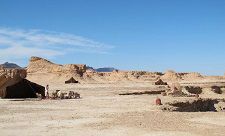 |
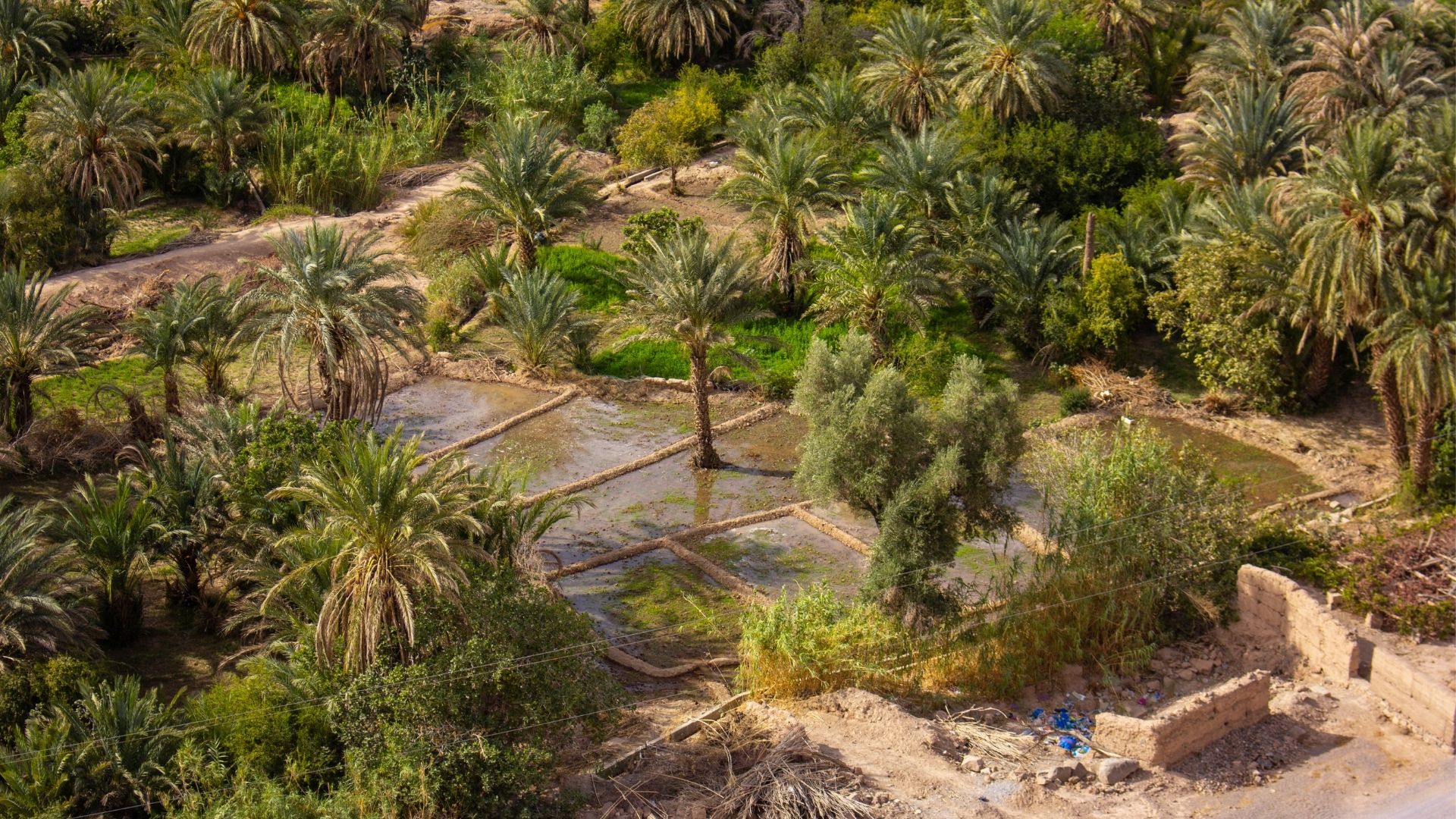 |
|
A 63 Km à l’Ouest de Tata, dans ces contrées là où les paysages sont plutôt désertiques, on trouve quelques vestiges en témoignages du passé glorieux, notamment la Kasbah de Sidi Abdellah Benmbarek, un site historique dominé par Agadir Amghar, un minaret datant du 12ème siècle, qui architecturalement sera repris pour la construction de la tour Hassan à Rabat ; puis l’Agadir Ouzrou, un douar vieux de plus de 4 siècles |
Se situe au sein d’une Oasis, elle est entourée par : Assa, Taroudant, Tiznit, Guelmim et Ouarzazate. La région de Tata renferme un patrimoine archéologique, culturel et géologique très riche témoignant d’une civilisation prodigieuse, qui a rayonné pendant des millénaires, caractérisée par la richesse et la diversité de son artisanat dans les centres urbains ainsi que dans les communes rurales. |
| Foum Zguid | Tissint |
 |
 |
|
Un village typique dominé par le Jbel Bani. Cette destination du sud du Maroc est réputée pour son immense oasis et son ancienne kasbah, qui offrent un panorama unique. Foum Zguid est surtout célèbre pour ses excursions en famille, en amoureux, entre amis, à la découverte des grandes dunes du Sud marocain. |
Tissint : l’un des plus beaux villages de Sud Maroc, situé dans une palmeraie à 69 Kilomètres à l’Est de Tata, sur la route de Foum-Zguid au Sud de Ouarzazate. Le village appartient administrativement à la Province de Tata. |
| Ouarzazate | Ait Ben Haddou |
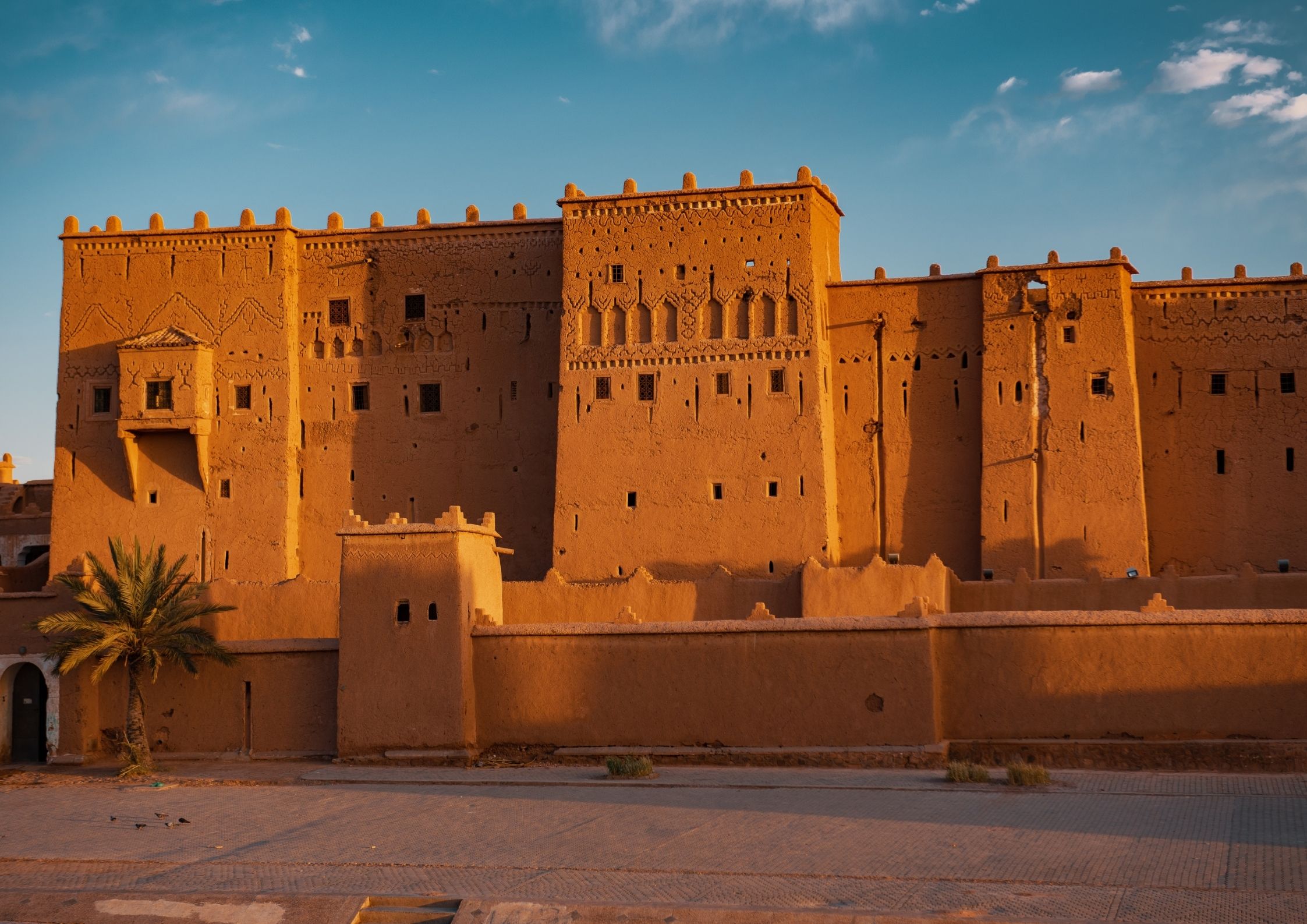 |
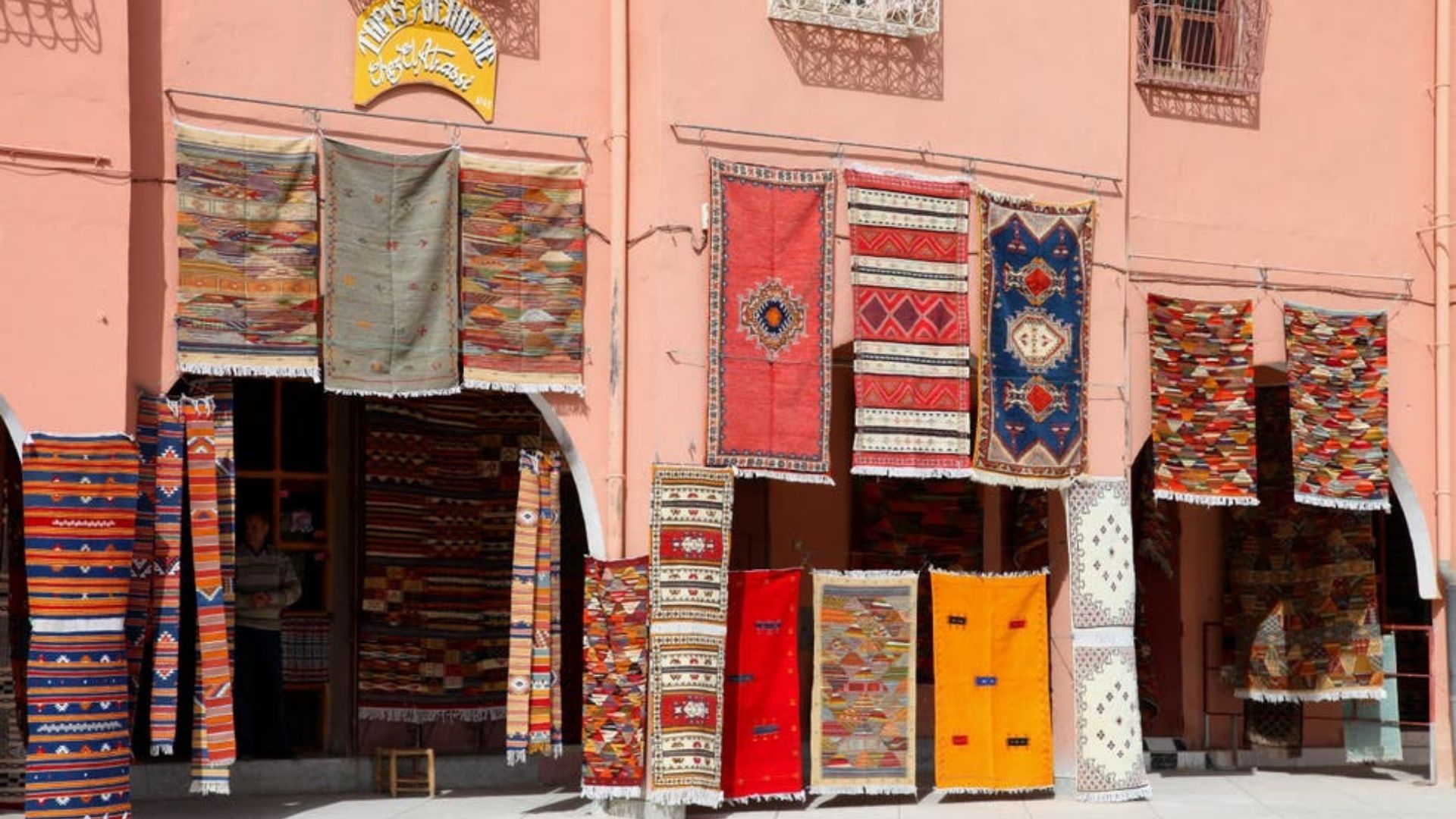 |
|
Ville du Sud Marocain du Cinéma, mise en valeur avec des films tels que Lawrence d’Arabie, est une oasis de couleur caramel superposée à l'azur sans nuages du ciel nord-africain avec ses innombrables kasbahs en pisé, des montagnes et plaines arides, des vallées et oasis verdoyants, des palmeraies et des villages de terre rouge ou ocre qui font le charme de cette région et lui donnent son attrait touristique.Le symbole de la ville est la kasbah de Taourirt qui a appartenu au Glaoui, XVIIIe siècle. |
Aït Benhaddou est l’un des sites touristiques les plus connus du sud-marocain. Il s’agit d’un village fortifié, Ksar, formé de bâtiments de terre, (Kasbahs) et construit sur une colline au milieu d’une vallée. Ce ksar, est très bien préservé, et il est inscrit depuis 1987 au patrimoine mondial de l’UNESCO. Il a ainsi bénéficié des travaux de conservation programmés pour le sud-marocain. |
| Taznakht | |
 |
|
|
Taznakht : est une ville du Maroc située dans la région de Drâa-Tafilalet. Elle faisait partie de la confédération des Ait-Ouaouzguit. Elle est actuellement un grand centre de tissage de tapis berbères. |
|
HISTORY AND CULTURE
We know today that most of the civilization trends which have been detected in Sahara reached its north border and even then the mountains of the Moroccan South...
Read more...TOURIST ATTRACTIONS
The oasis from the communes of Taghijt, Asrir, Tighmert, Ifrane of the Anti-Atlas and Timoulay include several tourist appeals...
Read more...THE WADI MOUTHS
Foum Assaka, tourist interest site attracts already the tourist professionals. This coast of great views and ecological richness is the subject of tourist vocation...
Read more...HOSPITALITY
The savoir-vivre begins by different ways to welcome vistors with what is immediately available and presentable...
Read more...CRAFT
Craft in the area is the reflect of a spiritual and material civilization past. Between tradition and modernity...
Read more...




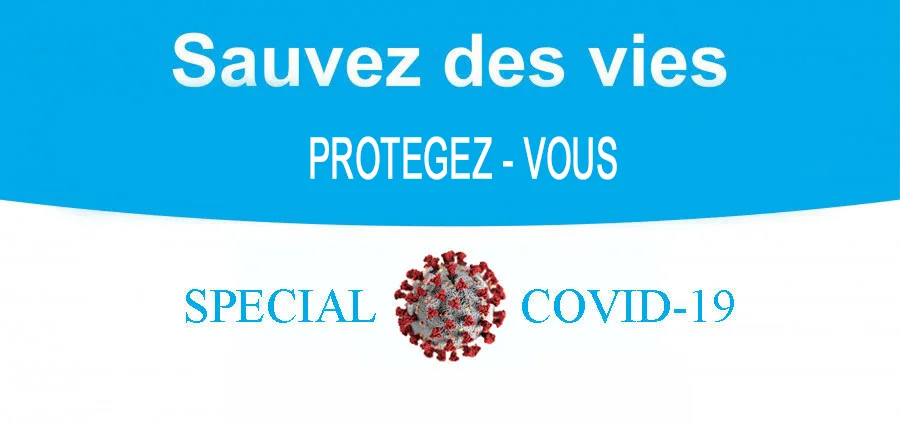

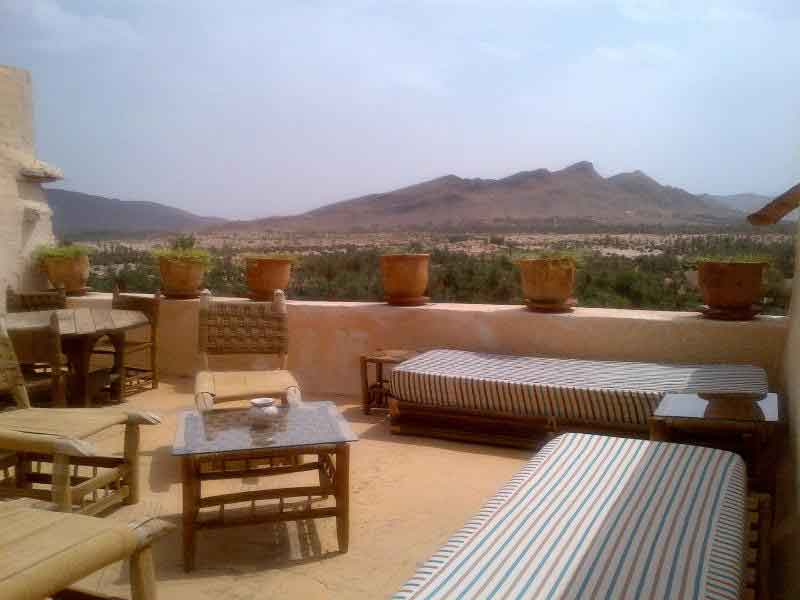
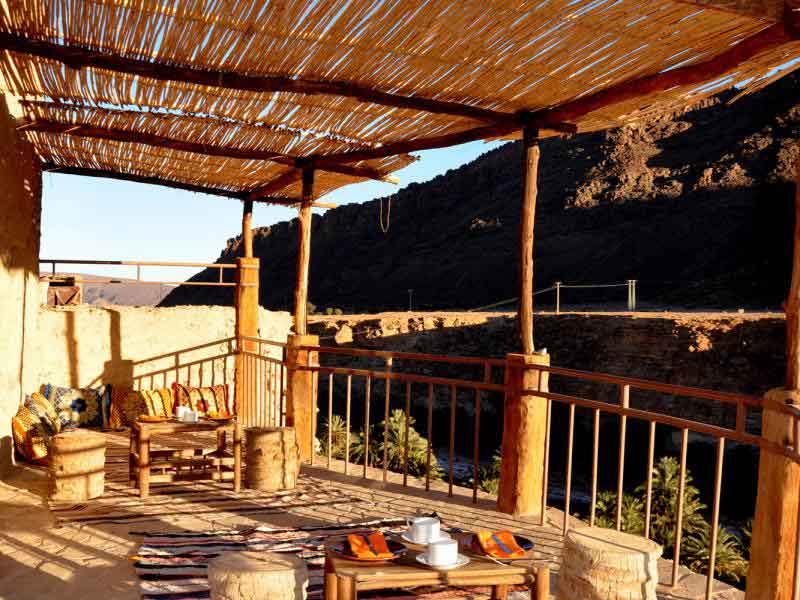
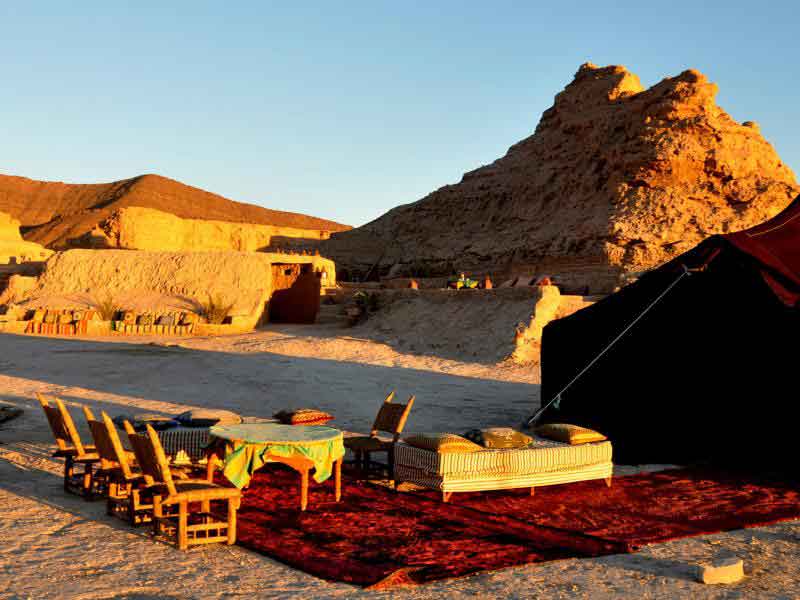
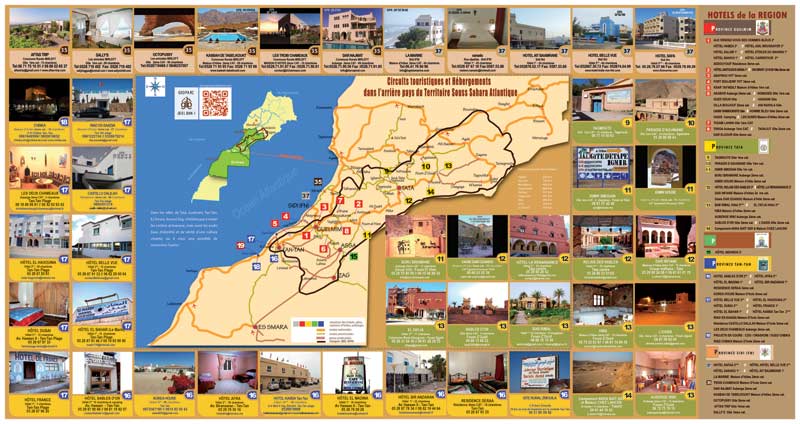
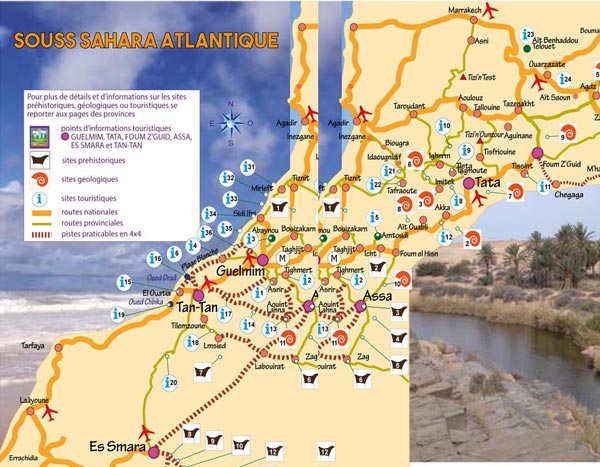
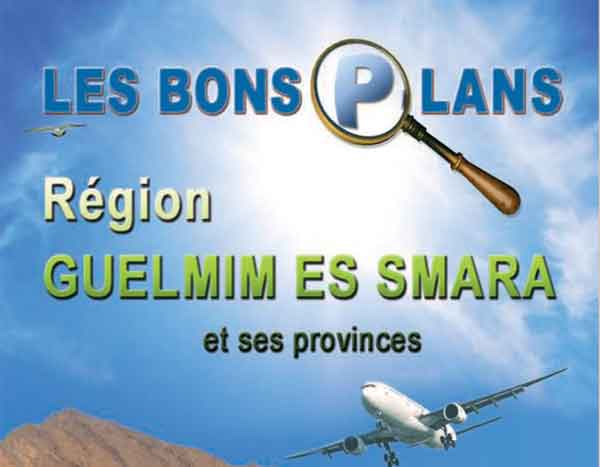
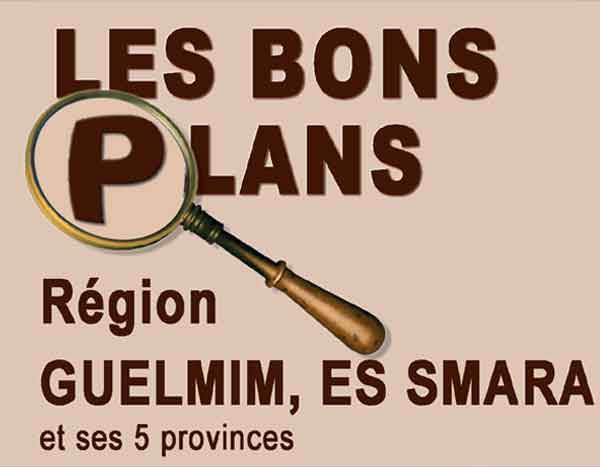

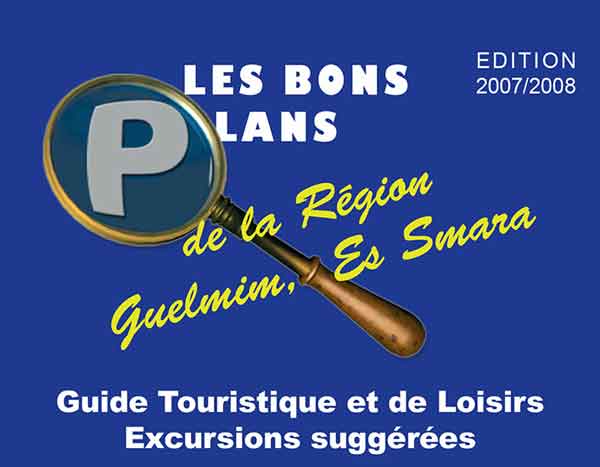
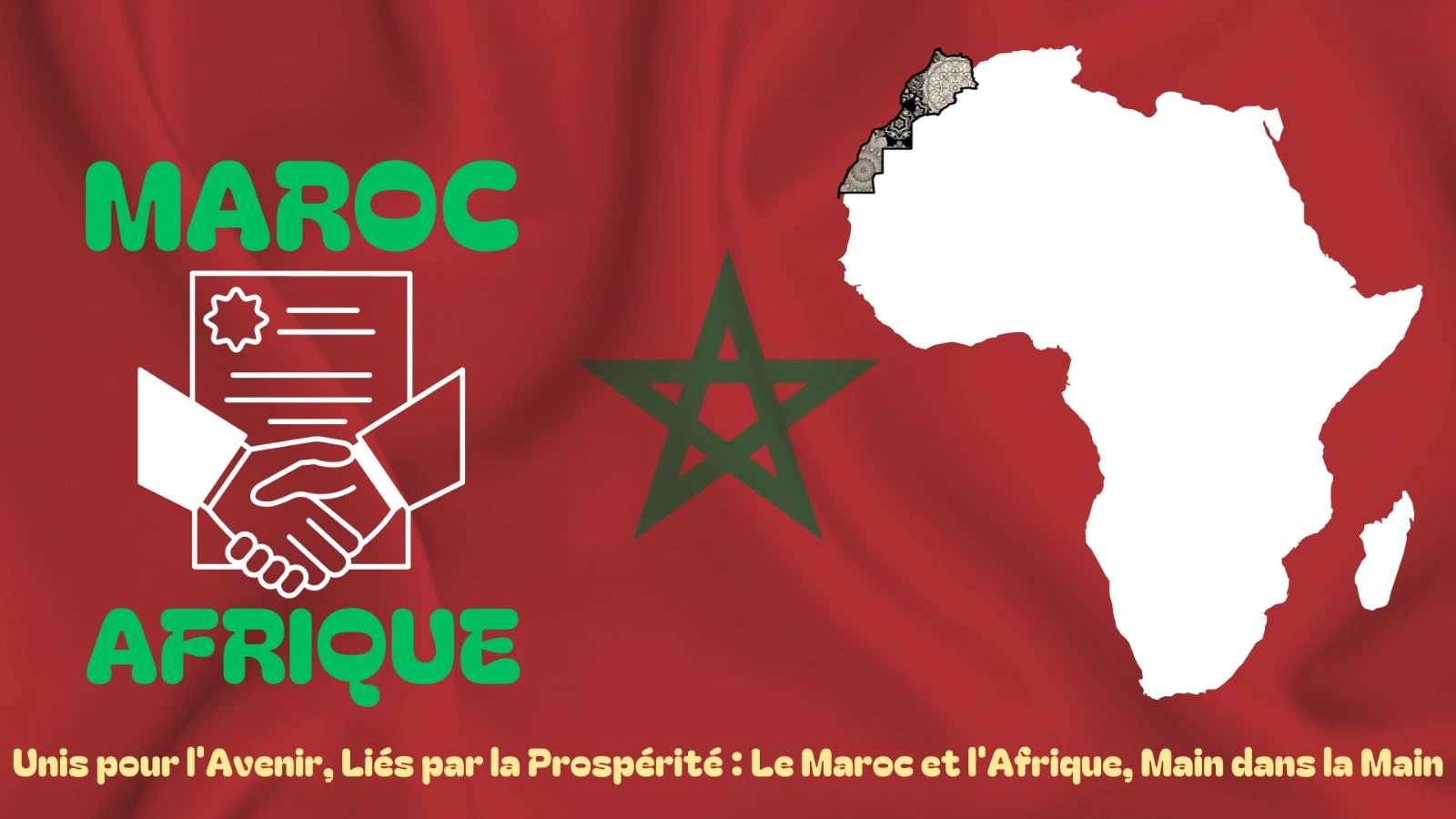

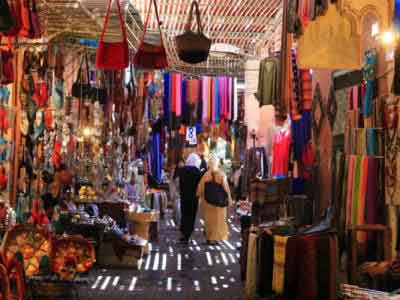
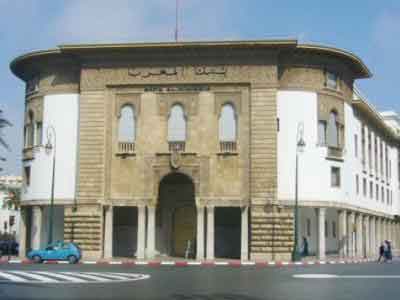
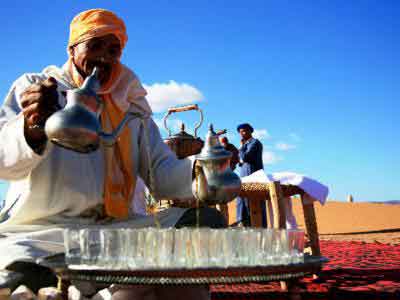


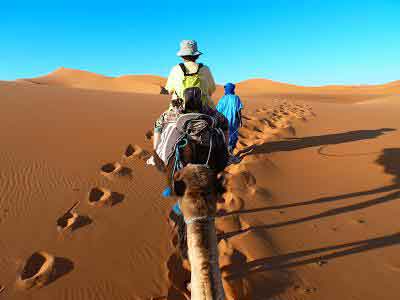
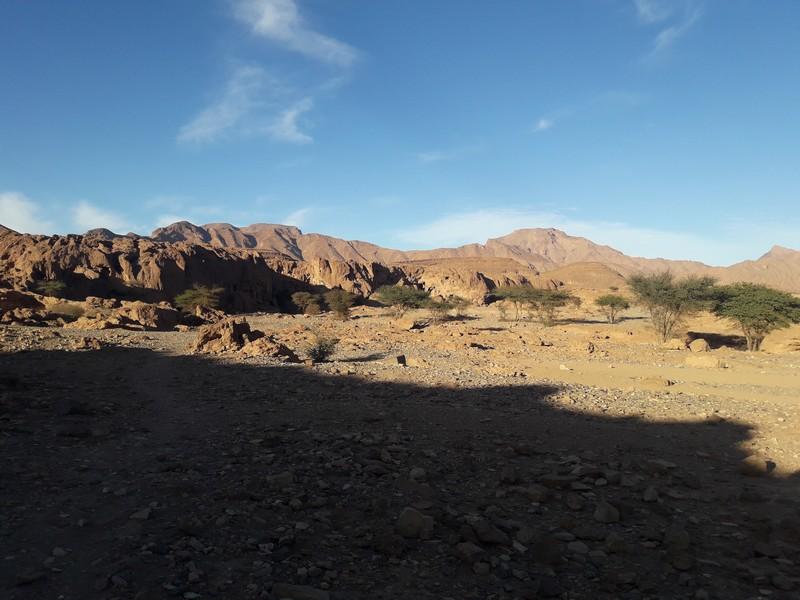
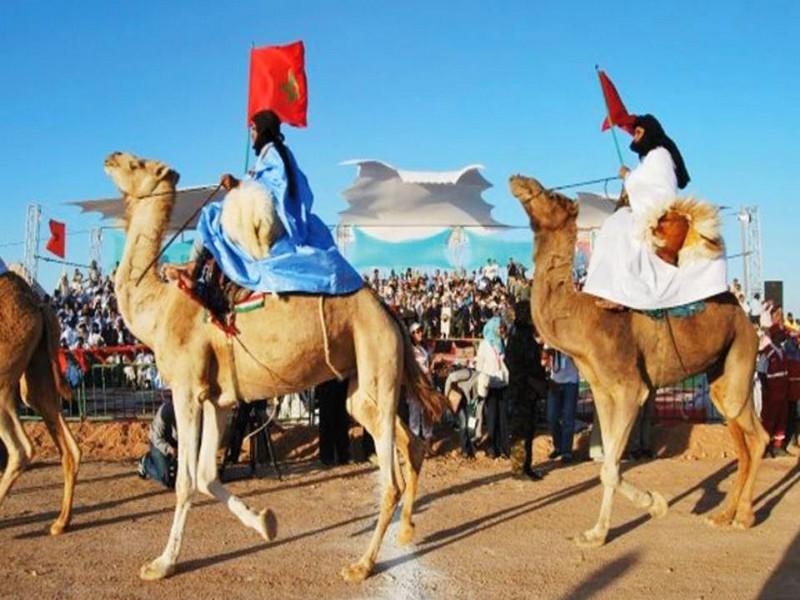
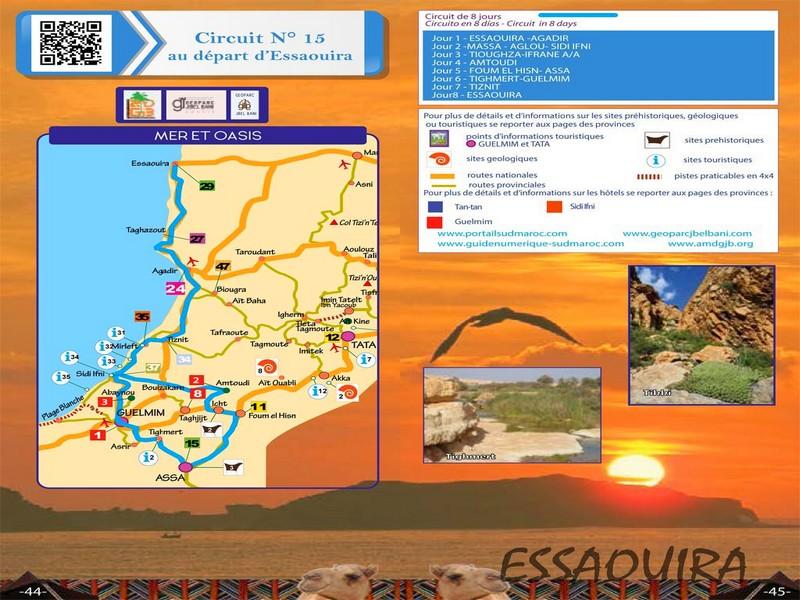

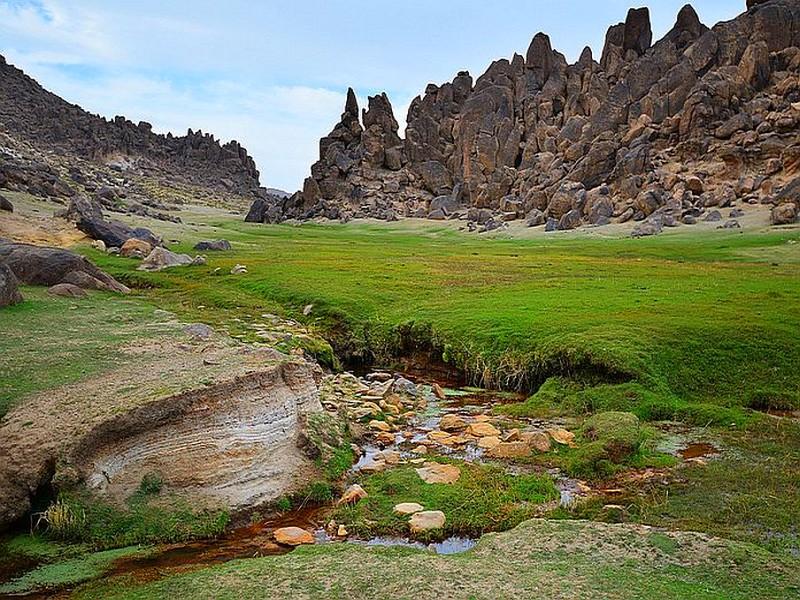



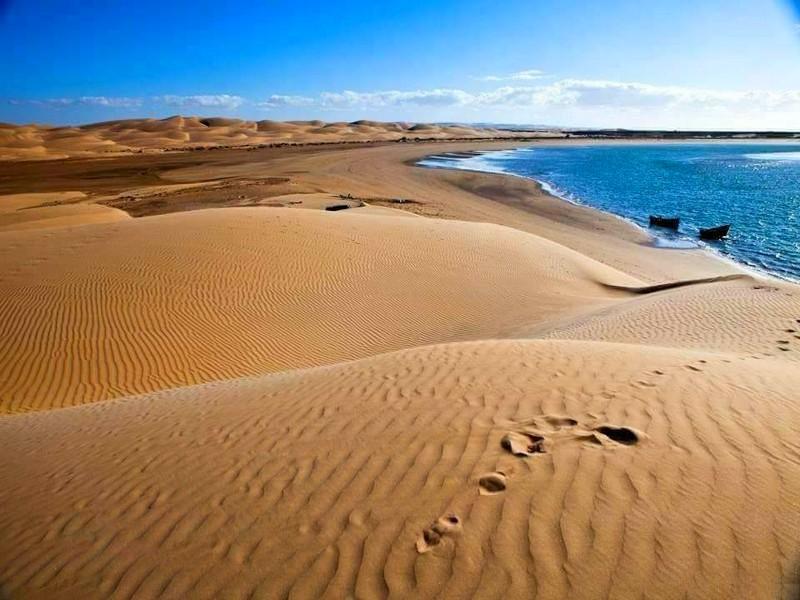
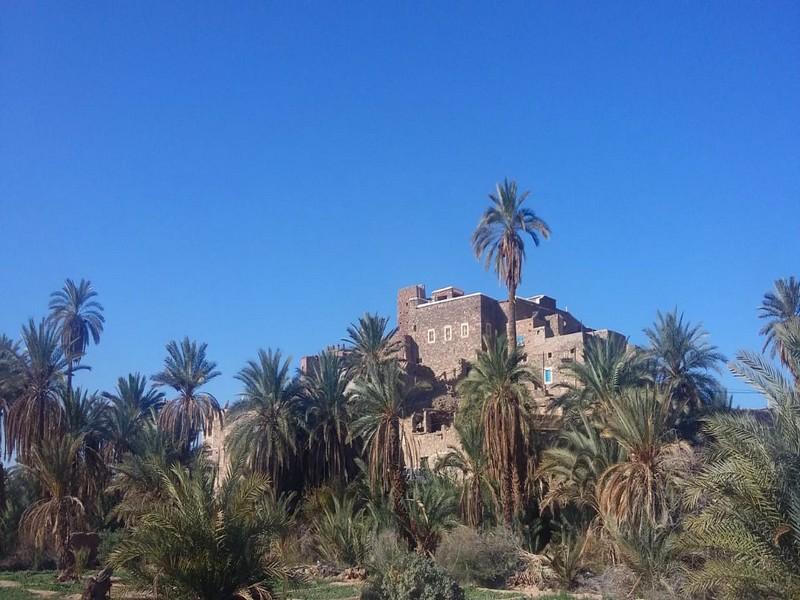
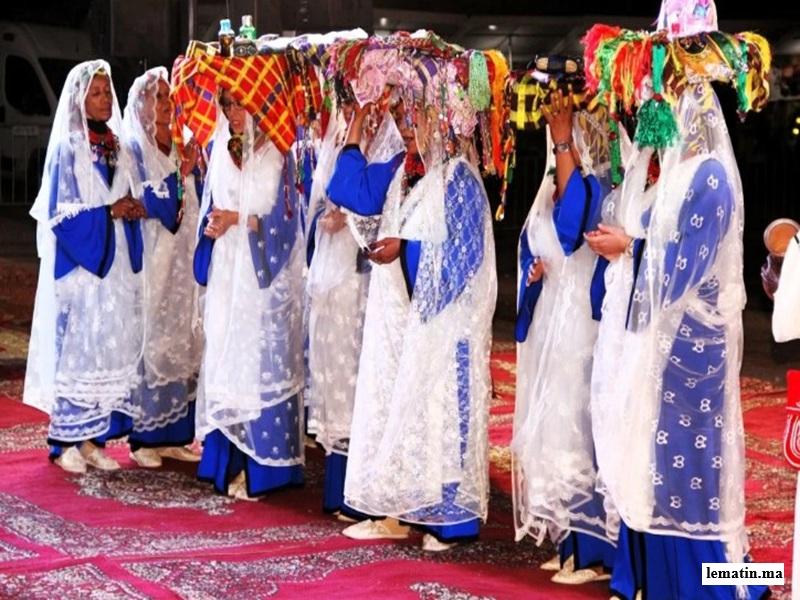
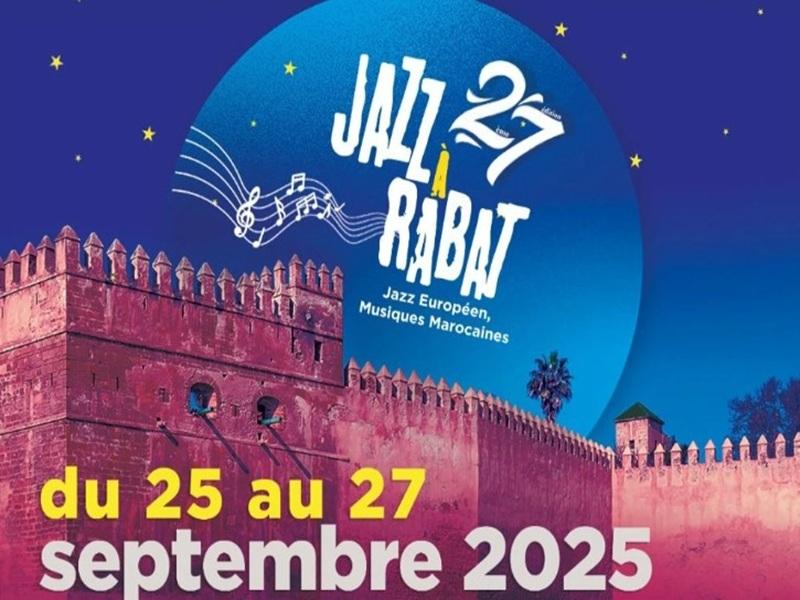
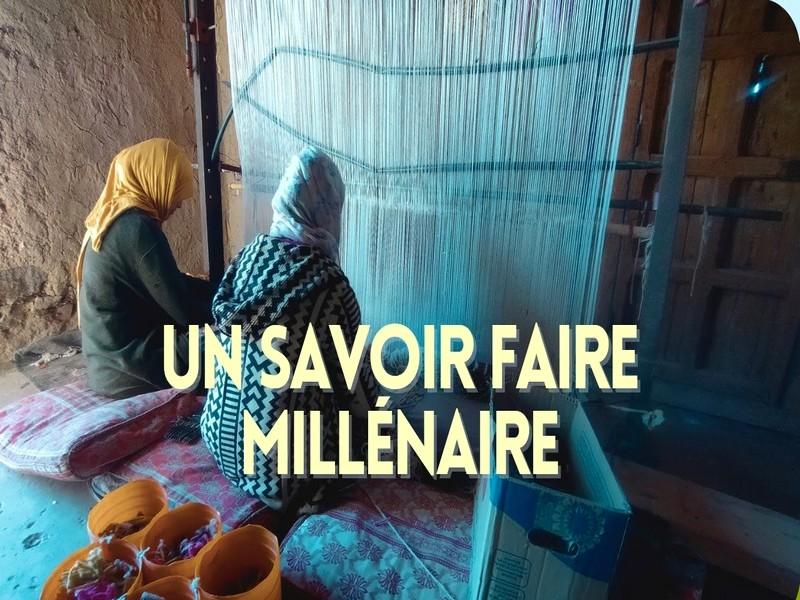
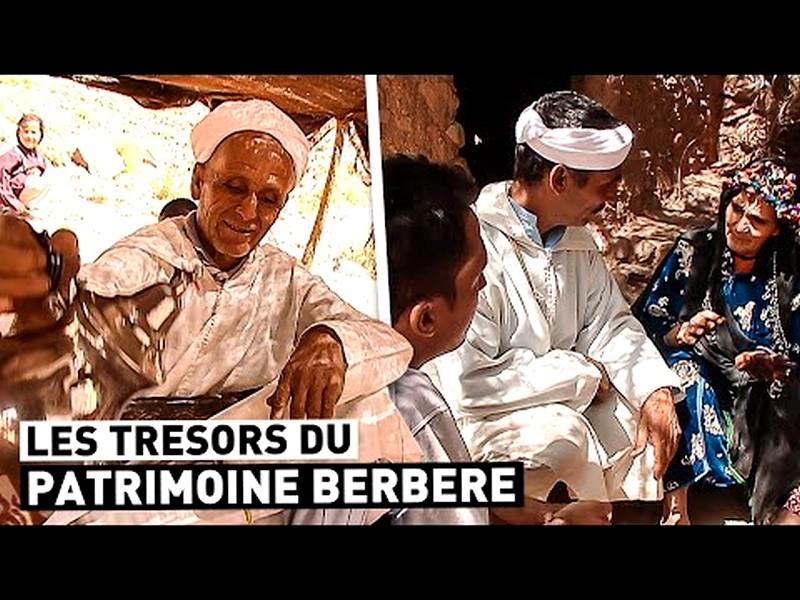
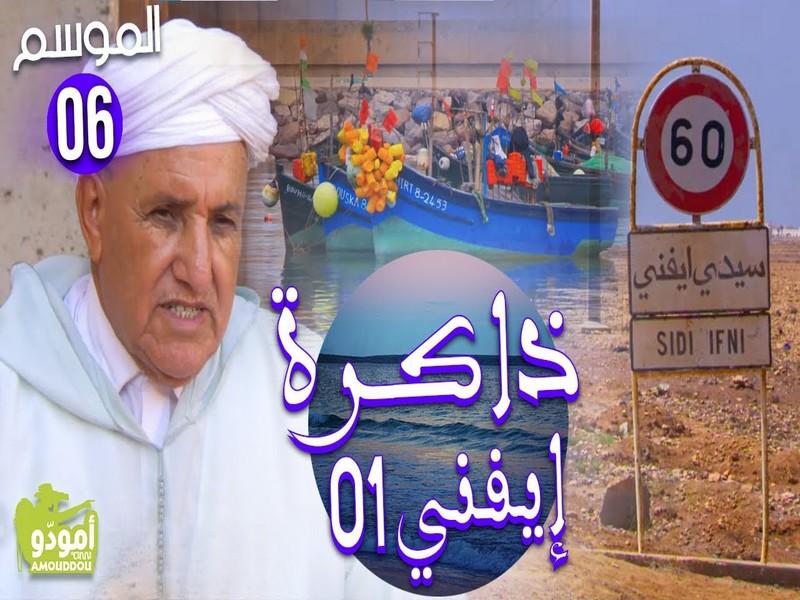

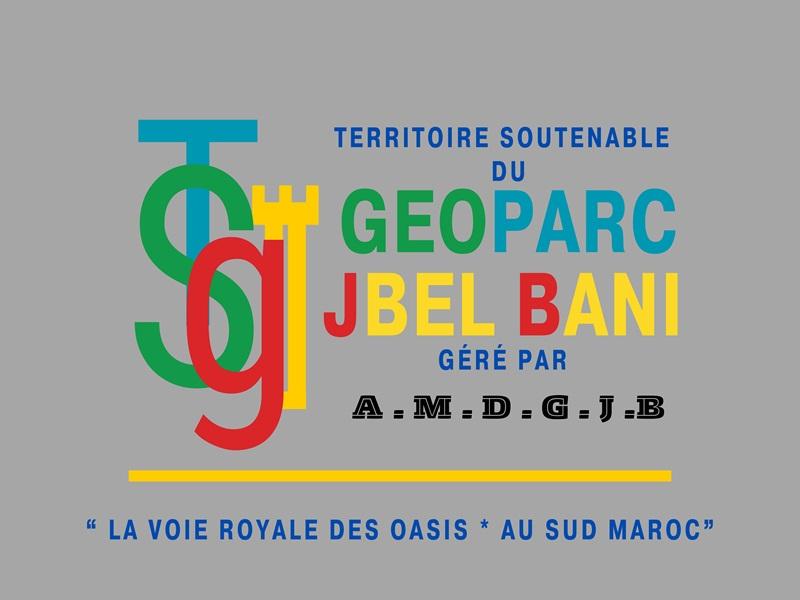
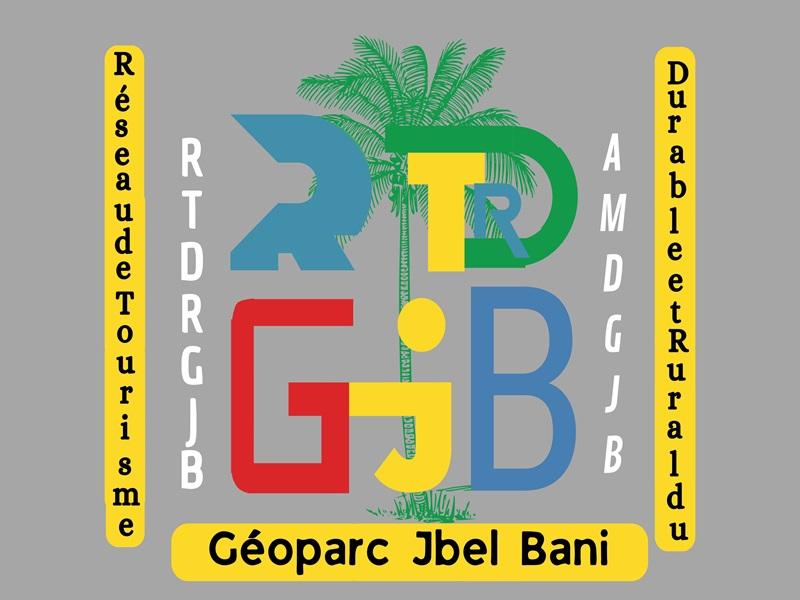
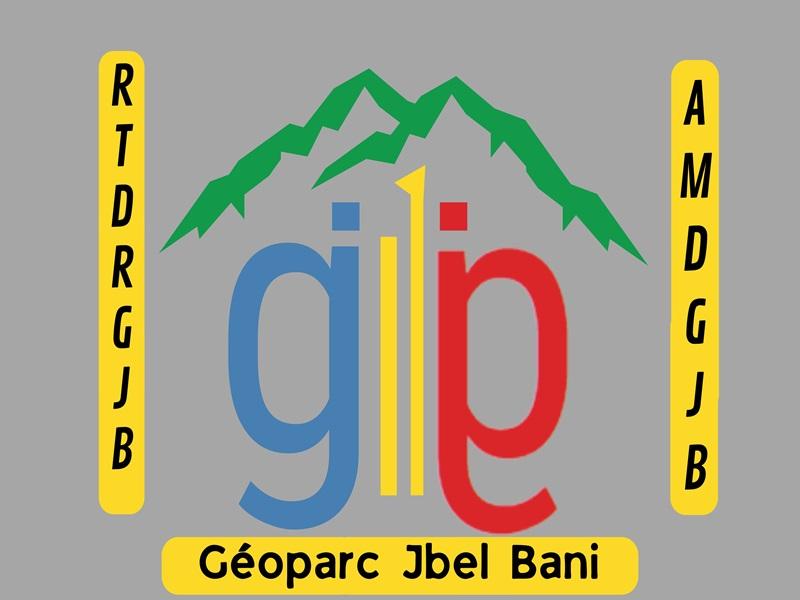
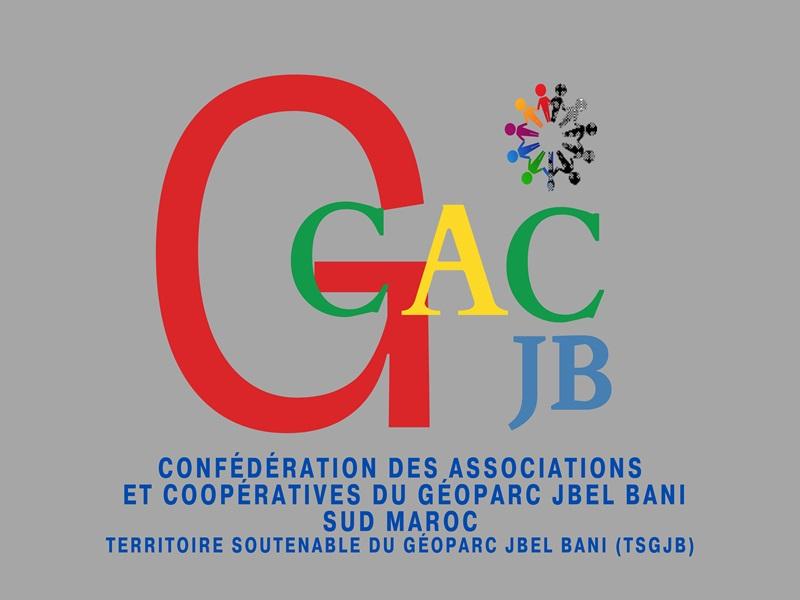
 Découvrir notre région
Découvrir notre région